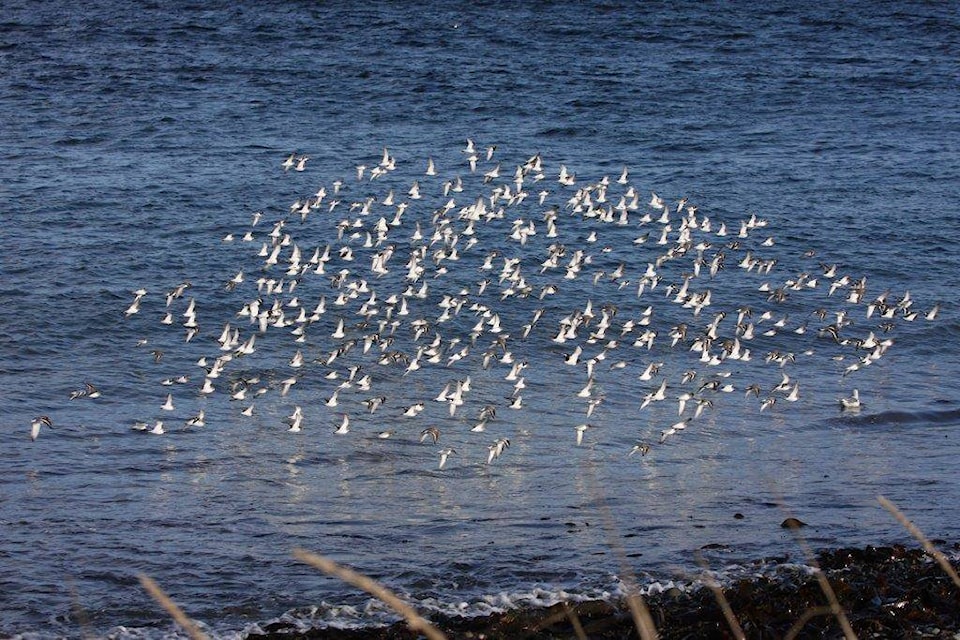By Margo Hearne
It’s a blustery morning.
The Green-winged Teal, which returned about a month ago, line up darkly on the edge of the rising tide. They seem dark because the day is dark. After a lovely week of clear chilly weather we are all taken by surprise. But the ducks do their thing. American Wigeon float casually along the calm water, a few Pintail stretch their wings and a Common Loon dives for a bite of fish-food in the middle of the channel. There is even a Eurasian Wigeon in the flock, with grey rather than rusty sides.
Not everyone has the privilege of living beside a bird sanctuary and watching the changing seasons from their office. It is never taken for granted. It wouldn’t take much for a tidal wave to sweep the whole thing away. And it doesn’t have to be literal. Political waves are as dangerous as anything. Note the recent decision by the U.S. administration to undermine the foundations of the Migratory Birds Treaty Act and throw us back to the days when egrets were killed for their feathers to decorate fashionable hats. Millions of birds died for our glamour.
It took courageous women to force changes, and by the late 1890s women conservationists began a campaign to end the slaughter. And we are talking slaughter — more than five million birds, including herons, egrets, ibis, terns, grebes, hummingbirds and owls were taken for the millinery trade. Then socialites Harriet L. Hemenway and Minna B. Hall started a campaign to end it. Over 900 “upper crust” women eventually formed the Massachusetts Audubon Society, which became the National Audubon Society and led to the Treaty Act of 1918.
The act made it “unlawful to pursue, hunt, take, capture, kill, possess, sell, purchase, barter, import, export or transport any migratory bird.” It led to the end of the trade in feather hats. And now the treaty is under threat from He Who Shall Not Be Named.
A flock of Killdeer yelled from the flats at low tide this week. They had landed in the mudflat as the tide fell, which is when pickings are at their best. A neighbour had mentioned them to us as well, and as it was a particularly bright afternoon with the sun to the west, the light was excellent. We studied the flock. A small group of Dunlin sandpipers landed and in the mix were even smaller birds. The bright light showed us their little yellow legs. They had a “hunkered” look as they darted among their larger cousins. They were Least Sandpipers. Although they nest here in summer, they are rarely seen in December. They are down from the north country to land where the living is easy. Sort of. All week the sandpipers fed in relative calm until two Peregrine Falcons arrived. C’est la vie.
The Varied Thrushes are back. They had not been particularly visible this fall then four appeared in the bushes, one showed up in the garden and now many flit away from the roadside along Cemetery Road in the early morning. Nice.
This year’s Christmas Bird Count locations and dates are Tlell, Dec, 17; Port Clements, Dec. 19; Greater Masset, Dec. 27; Skidegate, Dec. 30; Queen Charlotte, Dec. 30; Sandspit, Dec. 30. Call 250-626-5015 for info.
